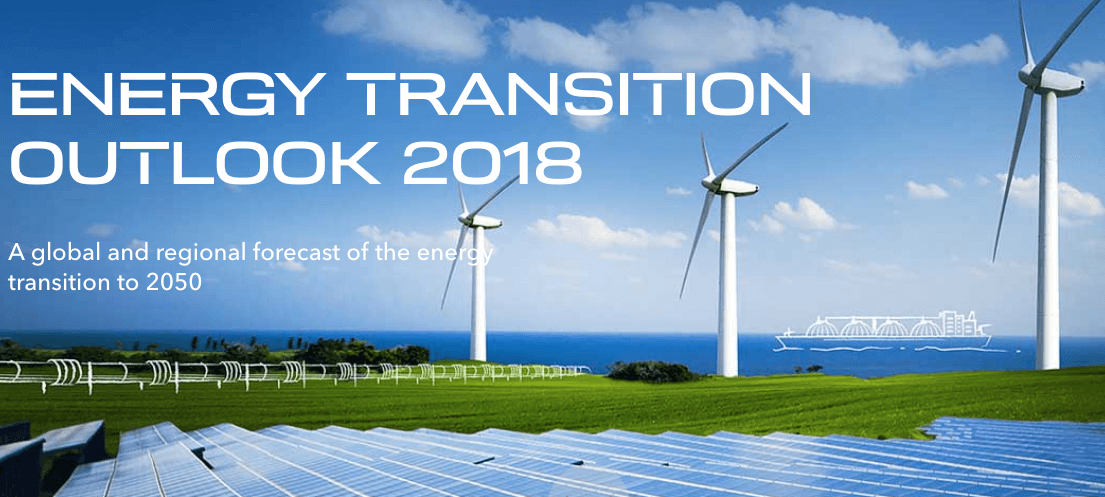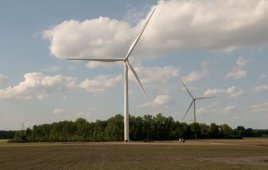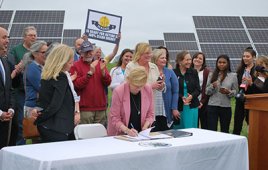Rapid electrification of energy demand and the rise of energy from wind and solar sources will lead to massive growth of the world’s electricity transmission and distribution systems. This is one of the main conclusions of DNV GL’s Energy Transition Outlook 2018: Power Supply and Use report, which provides an outlook of the global energy landscape up to 2050.
The report forecasts continuing rapid electrification, with electricity’s share of the total energy demand expected to more than double to 45% in 2050. This is driven by substantial electrification in the transport, buildings, and manufacturing sectors. In the transport sector, the uptake of private electric vehicles (EVs) will continue to escalate rapidly, with 50% of all new cars sold in 2027 in Europe expected to be EVs.

DNV GL’s new report finds that the total installed power line length and capacity will triple by 2050 to deliver a surge in electricity demand and address the dispersed nature of wind and solar energy. The full “Power Supply and Use” report is available for a free download here. The publication is part of DNV GL’s suite of Energy Transition Outlook reports.
The surge in global electricity production will be powered by renewable sources accounting for an estimated 80% of global electricity production in 2050. As the costs for wind and solar continue to fall, those two energy sources are set to meet most of the electricity demand, with solar PV delivering 40% of electricity generation and wind energy 29%.
The rapid electrification will lead to major expansion of electricity transmission and distribution systems both in the length and capacity of transmission lines. DNV GL predicts that the total installed power line length and capacity will more than triple by 2050.
The system operators’ tasks will become substantially more complex; yet there may well be less energy flowing across the networks, resulting in fixed costs becoming a greater part of the bill.
High fractions of solar and wind will create a need for increased use of market mechanisms and changes to the electricity market fundamentals in many countries. This requires major regulatory intervention. Market based price signals are crucial to incentivize innovation and develop economically efficient flexibility options.
Despite major expansion of high-capital-cost renewables and electricity networks, energy will become more affordable. It is predicted that the total cost of energy expenditure, as a share of global GDP, will fall from 5.5 to 3.1%, a drop by 44%. Absolute energy expenditure will still grow by 30% over the forecast period, to 6 Tn$/yr. DNV GL foresees a shift in costs, from operational expenditure, principally fuel, to capital expenditure.
From 2030, more capital expenditures will go into electricity grids and wind and solar than into fossil-fuel projects.
Despite the positive outlook on the expansion of renewable energy and the electrification of key sectors, the energy transition will not be fast enough to meet global climate targets. In fact, DNV GL found that the first emission-free year will be 2090, if the energy transition continues at the pace predicted in its report.
“The Energy Transition Outlook has some very encouraging findings, and the good news is that the energy transition is achievable and affordable. However, the rapid transition we are predicting is still not fast enough to achieve the goal of the Paris Climate Agreement,” commented Ditlev Engel, CEO of DNV GL’s Energy business. “If we are to decarbonize the world’s energy system at the required speed, we need to adapt and automate our electricity grids, and regulators and politicians will need to re-think, re-shape and take major policy decisions about market models.”
Filed Under: Uncategorized




